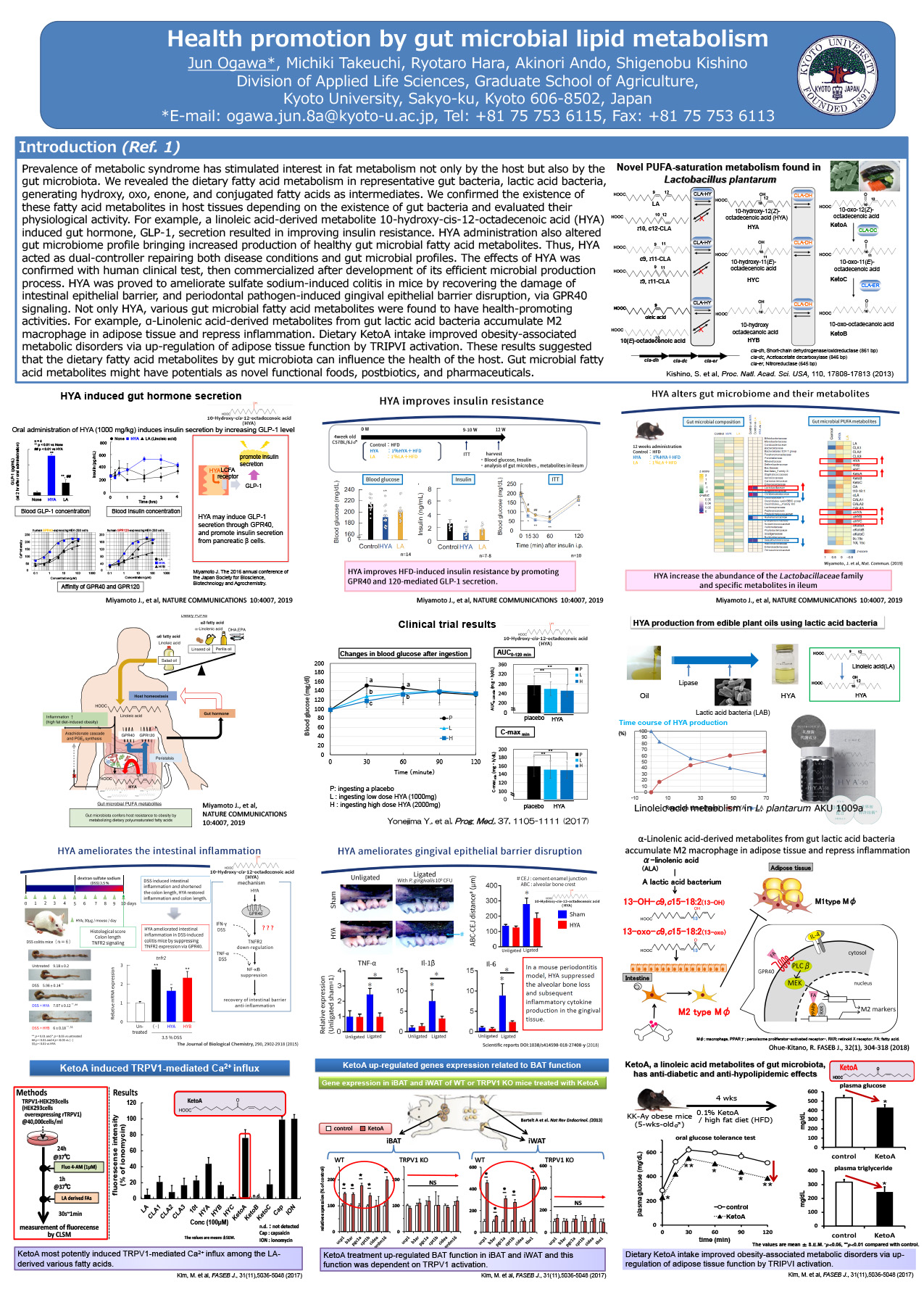Novel polyunsaturated fatty acid (PUFA) metabolism, anaerobic saturation metabolism, was found in gut bacteria. Through the metabolism, hydrated (hydroxy), oxo, enone, conjugated, and non-methylene-interrupted fatty acids were produced by the enzyme system consisting of hydratase, dehydrogenase, isomerase, and enone reductase 1). Enzymatic method to prepare these unique metabolites was established. The existence of these metabolites in host tissues depending on gut bacteria was revealed. The metabolites showed unique physiological activities 2). For example, a linoleic acid-derived metabolite 10-hydroxy-cis-12-octadecenoic acid (HYA) showed the following unique physiological activities.
- 1) HYA ameliorates sulfate sodium-induced colitis in mice by recovering the damage of intestinal epithelial barrier.
- 2) HYA ameliorates periodontal pathogen-induced gingival epithelial barrier disruption via GPR40 signaling.
- 3) Oral administration of HYA induced insulin secretion by increasing GLP-1 level.
- 4) HYA elicited anti-inflammatory effects in vitro in murine enterocytes.
- 5) HYA showed protective efficacy against gastric Helicobacter infections.Not only HYA various gut microbial fatty acid metabolites were found to have health-promoting activities. These results suggested that the dietary fatty acid metabolites by gut microbiota can influence the health of the host. Gut microbial fatty acid metabolites might have potentials as novel functional foods and pharmaceuticals.
1) Kishino, S., et al., Polyunsaturated fatty acid saturation by gut lactic acid bacteria affecting host lipid composition. Proc. Natl. Acad. Sci. USA, 110, 17808-17813 (2013).
2) Miyamoto, J. , et al., Gut microbiota confers host resistance to obesity by metabolizing dietary polyunsaturated fatty acids. Nat Commum. 10, 4007 (2019).
